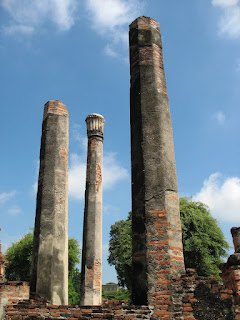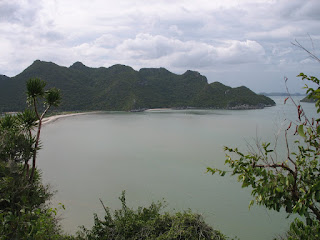

Shibuya crossing
I'm proud of myself. Despite the doubts of many who thought it might not be possible, I took the train into Tokyo during my 10 hour layover at Narita Airport. Armed with my guidebook and a game plan, I left Narita at 6:30am and headed for the train station. I made the mistake of getting on the local train, which made about 30 stops along the way and took over 2 hours to get into the city. However, it was half the price of the faster train, so whatever; I suddenly get extremely patient when I'm saving money. I took the train to Ueno station, where I transfered to the JR train, that brought me to Shibuya. Every Japanese person that I asked for help spoke excellent english and was eager to point me in the right direction; I normally don't like asking directions if I can figure it out myself, but with no room for error in this Tokyo excursion, I put myself immediately at their mercy and kindness. Desperate for coffee, having now been awake for a night and a day, I gave into the lure of Starbucks for the first time in three months. The Starbucks in Shibuya has a fantastic view overlooking the main intersection (above), so I like to think that my $3 coffee was actually to pay for this view. (The Starbucks also has a trash can in the bathroom that opens with a wave of your hand.) After watching the mechanics of the pedestrian crossing for a while, I wandered more through Shibuya and up to the Meiji Shrine. It had been raining when my plane landed, and now the city was clouded and misty and cool--quite an abrupt climate change from Bangkok. I immediately wished I had a sweater with me, but I was still dressed for the tropics. The Meiji Shrine has a beautiful long walkway through a densely forested park; it is like a retreat, an escape from the city, as if the trees shield the shrine from the commerce and neon of Tokyo. I felt overly rushed in this experience, unfortunately, and kept hoping that all of my transportation would run like clockwork back to the airport. After leaving the park, I headed towards a used clothing store I had read about, "Chicago", in the nearby Harajuku neighborhood. The store was filled with used American import clothing--good stuff and cheap, better than we can find in a US thrift store. I hastily bought a couple of wool sweaters (being really in the mood for winter at this point), took a quick walk down the hipster street, Takeshita-dori, and jumped back on the JR toward Ueno. At Ueno, I bought the higher-priced Skyliner ticket back to the airport, which got me there in an hour flat. I got back way early, which made me regret my speed through Tokyo, but I still feel as though I got a good dip into the city, and I mastered public transport with no mistakes. I was surprised that I saw relatively few tourists in Tokyo, even though I hit some of the biggest hotspots. For instance, most of the visitors at the Meiji Shrine were Japanese. I was in awe of the fashionable young people as well; they put even New Yorkers to shame.















































